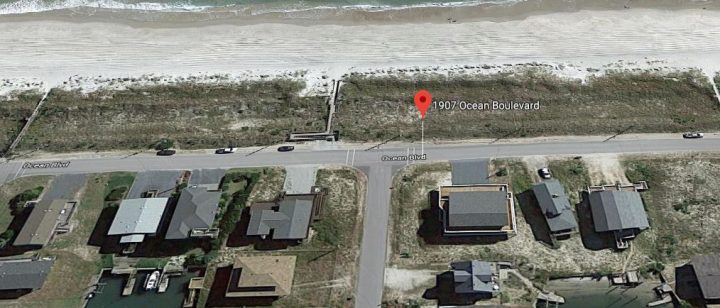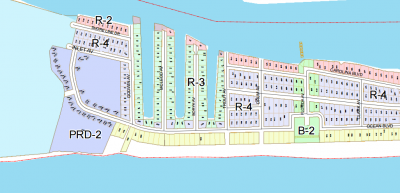
TOPSAIL BEACH – The Topsail Beach board of adjustment has upheld a decision by town officials to issue a building permit for an oceanfront lot, the first since Topsail commissioners repealed the town’s longstanding dune ordinance more than a year ago.
The board of adjustment’s unanimous vote July 17 denied an appeal by property owners who argue that building on the oceanfront lots would increase the risk of flooding on their land.
Supporter Spotlight
Those property owners have 30 days to appeal in Pender County Superior Court.
The owners of three soundside properties appealed the building permit. Two of those soundside lots are immediately adjacent to the oceanfront property in the 1900 block of Ocean Boulevard whose owners now have a permit to build. Appellant Grier Fleischhauer’s home is in the 1800 block of Ocean Boulevard.
Fleischhauer declined to comment.
The dispute over whether a stretch of nearly 30 undeveloped oceanfront lots along the south end of town stretches back to early 2015, when the town issued a building permit to a couple who owns one of the lots.
In June 2015, five months after the permit was issued, commissioners adopted revisions to the more than 20-year-old dune ordinance.
Supporter Spotlight
Several oceanfront property owners began challenging the changes, arguing that the revisions rendered their properties unbuildable.
The following year, commissioners were asked to adopt a series of amendments to the dune ordinance.
Property owners throughout the town, particularly those at the south end, opposed the proposed amendments, raising concerns about whether moving more sand would weaken the protective dunes, which reinforce the frontal dunes immediately landward of the beach, and whether the proposed changes would affect flood insurance.
The dispute carried through 2016 and, in December of that year, commissioners repealed the ordinance.
Within a week of the board’s vote, several soundside property owners sued.
In April 2017, Pender County Superior Court Judge R. Kent Harrell ruled to dismiss the case on the grounds of “lack of subject matter jurisdiction.”
The North Carolina Court of Appeals earlier this year upheld Harrell’s ruling.
The lower court ruled the more than 40 plaintiffs representing more than 20 properties did not have standing. In this case, standing determines whether the property adjacent to the oceanfront lots are imminently affected or harmed if the lots are developed.
For years, the oceanfront lots where homes once stood before they were destroyed in coastal storms were unbuildable because the dune system along that stretch of beach had been flattened by storms.

The town and private property owners spent years restoring the dunes through beach re-nourishment, planting sea oats and installing fencing to trap sand.
Their efforts eventually created lots that now have enough sand on them to meet the state Coastal Area Management Act’s setback requirements from the frontal dune.
Several CAMA permits have already been issued to owners of the oceanfront properties, including 1907 Ocean Blvd., the lot whose owners received a building permit May 23.
The permit application was submitted to the town in December 2017. A review by town staff, the town’s attorney and the North Carolina Regional Council of Government, determined the application needed more, according to Christina Burke, town clerk.
“It came back that we required an engineered analysis,” she said. “We wanted an engineer to look at it and tell us if it would increase the flood potential or not.”
The applicants hired an engineer, who, in March, submitted a two-page flood assessment letter, Burke said.
The letter included a “qualitative” analysis, which is the opinion of the engineer.
“The other party felt like we needed to have a quantitative analysis,” Burke said.
That analysis, preferred by those who appealed the permit, would have included coastal modeling to show whether building on the oceanfront property would increase the flood potential to adjacent soundside lots.
An intent to appeal was emailed to the town the same day the permit was issued.
Burke said she anticipates the town will write an order “any day now” to the property owners officially upholding the permit issuance. Once that happens, building can begin.
It is unclear whether the board of adjustment’s decision will be appealed.
Plans for the lot in question include a 2,000-square-foot, four-bedroom home. Once the permit is issued, the applicants have six months to begin construction.
In all, there are 28 lots, 22 of which are privately owned. The town owns the remaining six lots.
No other building permit applications had been filed, Burke said. But town officials expect to receive more building permit applications for the oceanfront lots at the south end.








